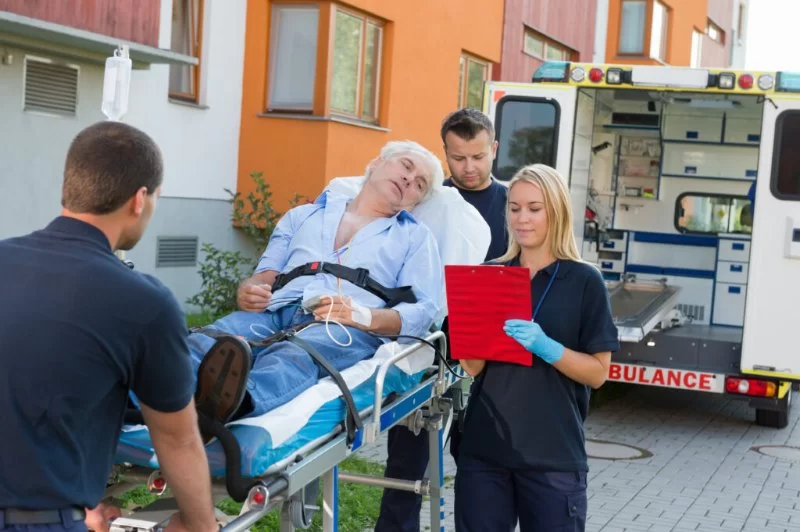- the-importance-of-outdoor-preparedness—why-planning-ahead-saves-lives
- core-principles-of-disaster-preparedness—awareness-training-and-mindset
- essential-gear-for-survival-scenarios—tools-packing-and-usage-tips
- scenario-planning-and-real-world-examples—case-studies-and-lessons-learned
- building-your-own-outdoor-readiness-plan—steps-for-individuals-and-families
- why-places-like-pine-cliff-resort-are-part-of-the-solution—training-and-retreats
1. The Importance of Outdoor Preparedness – Why Planning Ahead Saves Lives
Whether you're hiking remote trails, camping with family, or living in an area prone to natural disasters, understanding the principles of outdoor preparedness is no longer optional—it’s a life skill. From wildfires to flash floods, the growing frequency of extreme weather events means being ready isn’t a doomsday mindset—it’s a practical necessity.
Outdoor preparedness means anticipating environmental variables, knowing how to respond to sudden changes, and having the tools and mindset to protect yourself and others. It's about turning panic into purpose through preparation.
2. Core Principles of Disaster Preparedness – Awareness, Training, and Mindset
Preparedness begins with education. Before packing your bug-out bag or learning how to purify water, you need situational awareness and a survival mindset.
2.1 Situational Awareness
Knowing your surroundings and understanding weather patterns, terrain types, and local hazards is step one. You should be able to identify exit routes, shelter options, and nearby water sources without needing a map.
2.2 Mental Resilience and Decision-Making
In high-stress environments, mental clarity is your most valuable tool. Training in decision-making under pressure—such as STOP (Stop, Think, Observe, Plan)—can prevent critical errors.
2.3 Skills Over Gear
While gear helps, knowledge is irreplaceable. Fire-starting techniques, basic first aid, and shelter construction are foundational skills that don’t require high-tech tools.
At Pine Cliff Resort, workshops on situational awareness and outdoor decision-making are built into the experience—so preparedness becomes second nature, not something saved for “emergencies.”
3. Essential Gear for Survival Scenarios – Tools, Packing, and Usage Tips
Survival gear is about efficiency and purpose, not quantity. Here’s what you truly need:
3.1 Fire, Water, Shelter, and Signals
A magnesium fire starter, water purification tablets or a filter straw, a compact tarp or emergency blanket, and a whistle or mirror should all fit in a small pack. These items cover your immediate physical needs.
3.2 Multi-functional Tools
A durable knife, paracord, and duct tape can serve dozens of survival functions—from building traps to splinting injuries.
3.3 Clothing and Protection
Waterproof layers, thermal socks, gloves, and sun protection are often overlooked but can make or break your ability to remain safe and mobile.
Product kits curated by outdoor experts and tested in real-world conditions are available through Pine Cliff Resort partnerships, offering the essentials without the overwhelm of big-box gear shopping.
4. Scenario Planning and Real-World Examples – Case Studies and Lessons Learned
To make preparedness real, let’s look at two stories that highlight both the dangers of unpreparedness and the power of planning:
4.1 Case: Yosemite Lightning Storm, 2021
A group of hikers caught in a sudden lightning storm without shelter panicked and scattered. One broke an ankle. They had no first aid, no signal tools, and no knowledge of the terrain. Rescuers took over 9 hours to locate them.
4.2 Case: Northern Michigan Freeze, 2023
A couple camping off-grid used knowledge from a survival course at Pine Cliff Resort to build a snow cave, ration food, and signal with a mylar blanket after being stranded by a blizzard. They were found safe after 36 hours with no injuries.
These stories illustrate a core truth: in a crisis, instincts help—but preparation saves.
5. Building Your Own Outdoor Readiness Plan – Steps for Individuals and Families
Ready to build your own plan? Here's how to start.
5.1 Assess Your Risk
Are you in a floodplain? Near wildfire-prone forests? Do you spend time in isolated areas? Understanding your risk landscape shapes your preparation.
5.2 Create Layered Kits
A 24-hour pack, a 72-hour kit, and a long-term emergency box allow flexibility based on your activity. Each should include nutrition, hydration, warmth, and medical support.
5.3 Family and Group Roles
Involve everyone in your plan. Assign roles, run drills, and make sure every member knows how to respond if separated.
5.4 Practice in Safe Conditions
You won’t know your plan works until you test it. Practice building fires, purifying water, or setting up emergency shelter—before it becomes essential.
For guided support and skill-building weekends, Pine Cliff Resort offers immersive outdoor programs that combine nature with survival training in a realistic, controlled environment.
6. Why Places Like Pine Cliff Resort Are Part of the Solution – Training and Retreats
It’s one thing to read about survival. It’s another to experience it safely. At Pine Cliff Resort, outdoor preparedness isn’t a fringe hobby—it’s integrated into everything they do. With certified instructors, personalized coaching, and eco-friendly environments, you’ll learn to not just survive, but thrive.
Whether you're a solo camper, a parent prepping for weekend getaways, or someone looking to be self-reliant in emergencies, Pine Cliff offers a space to build confidence, refine your skills, and connect with nature in a meaningful way.
In today’s unpredictable world, preparation is peace of mind. And the best time to start is before you need it.







